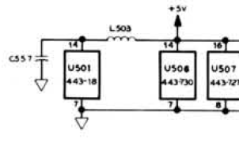daver2
10k Member
Yes,
Most of the pins look sensible - but with a couple of exceptions. Please check the following pins out on the Z80 CPU with your oscilloscope to see whether there is any activity on them or not. Your pins 19 and 20 being 0V is a concern also!
Pin 19 /MREQ.
Pin 20 /IORQ.
Pin 21 /RD.
Pin 22 /WR.
Pin 27 /M1.
Pin 28 /RFSH.
I would expect activity on ALL of these pins if the Z80 is working correctly.
I suspect pin 16 (/INT) is permanently LOW because the Z80 is not processing the interrupt correctly.
ROMs contain code (in general) so they are not interchangeable (unless they contain the same code of course). I assume, therefore, that you do not have an EPROM programmer?
No problem to giving you help. It doesn't take much of my time, and you are doing the hard bit!
Dave
Most of the pins look sensible - but with a couple of exceptions. Please check the following pins out on the Z80 CPU with your oscilloscope to see whether there is any activity on them or not. Your pins 19 and 20 being 0V is a concern also!
Pin 19 /MREQ.
Pin 20 /IORQ.
Pin 21 /RD.
Pin 22 /WR.
Pin 27 /M1.
Pin 28 /RFSH.
I would expect activity on ALL of these pins if the Z80 is working correctly.
I suspect pin 16 (/INT) is permanently LOW because the Z80 is not processing the interrupt correctly.
ROMs contain code (in general) so they are not interchangeable (unless they contain the same code of course). I assume, therefore, that you do not have an EPROM programmer?
No problem to giving you help. It doesn't take much of my time, and you are doing the hard bit!
Dave
Last edited:

